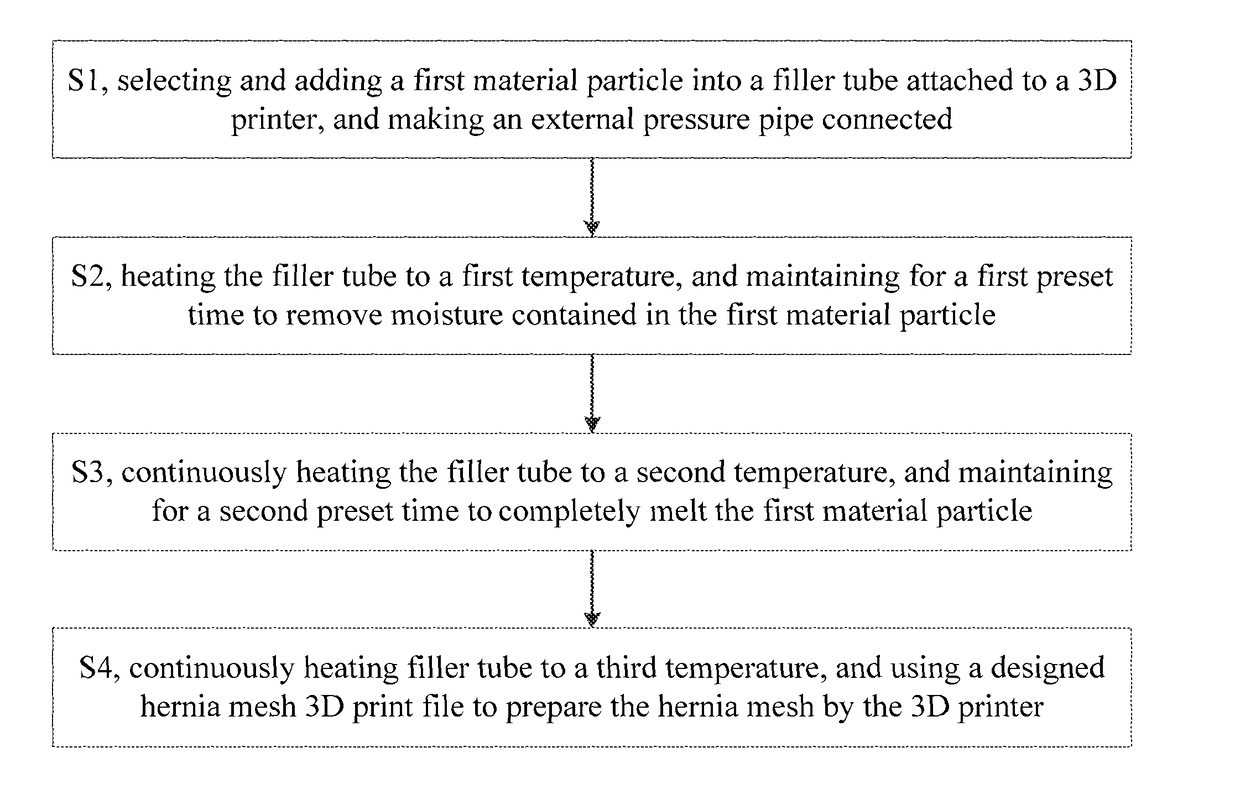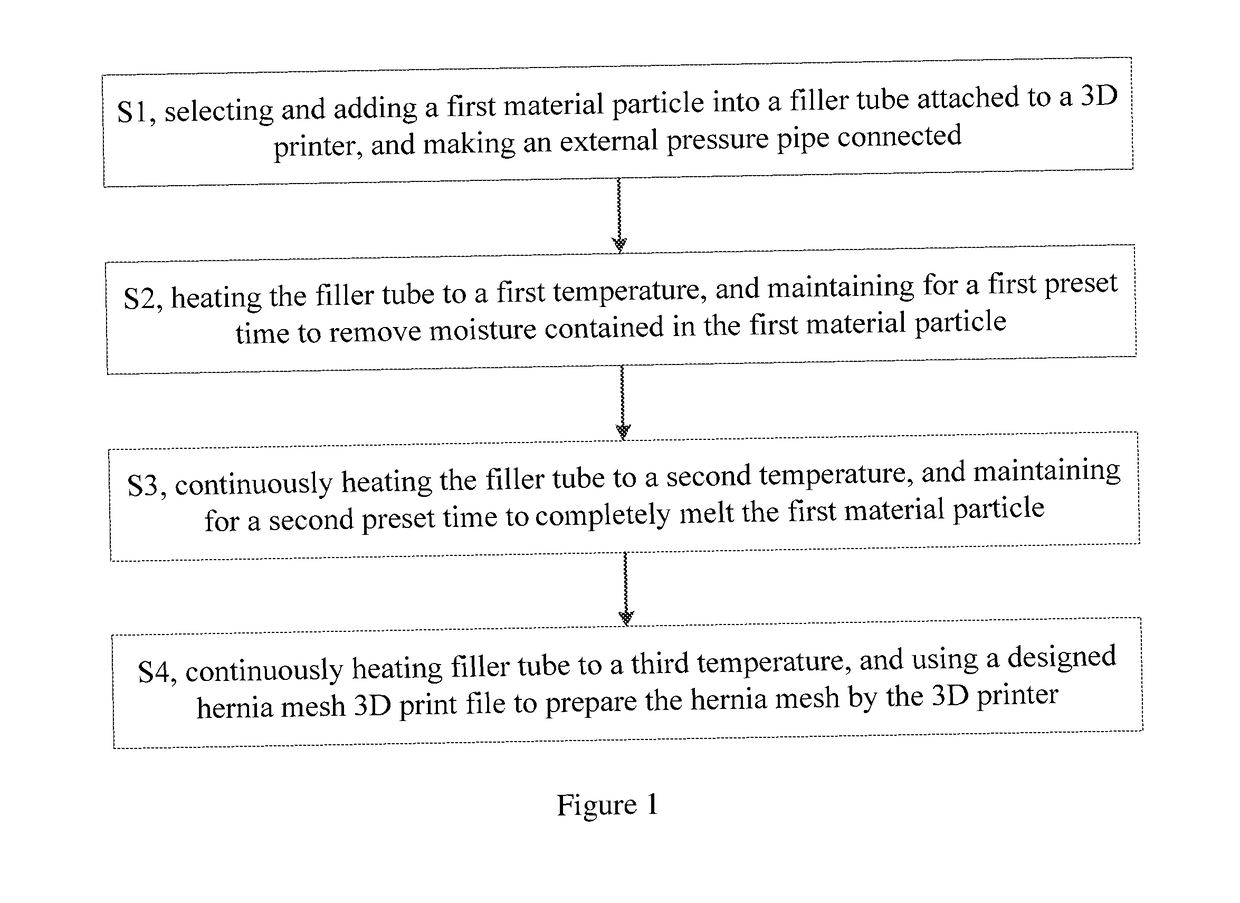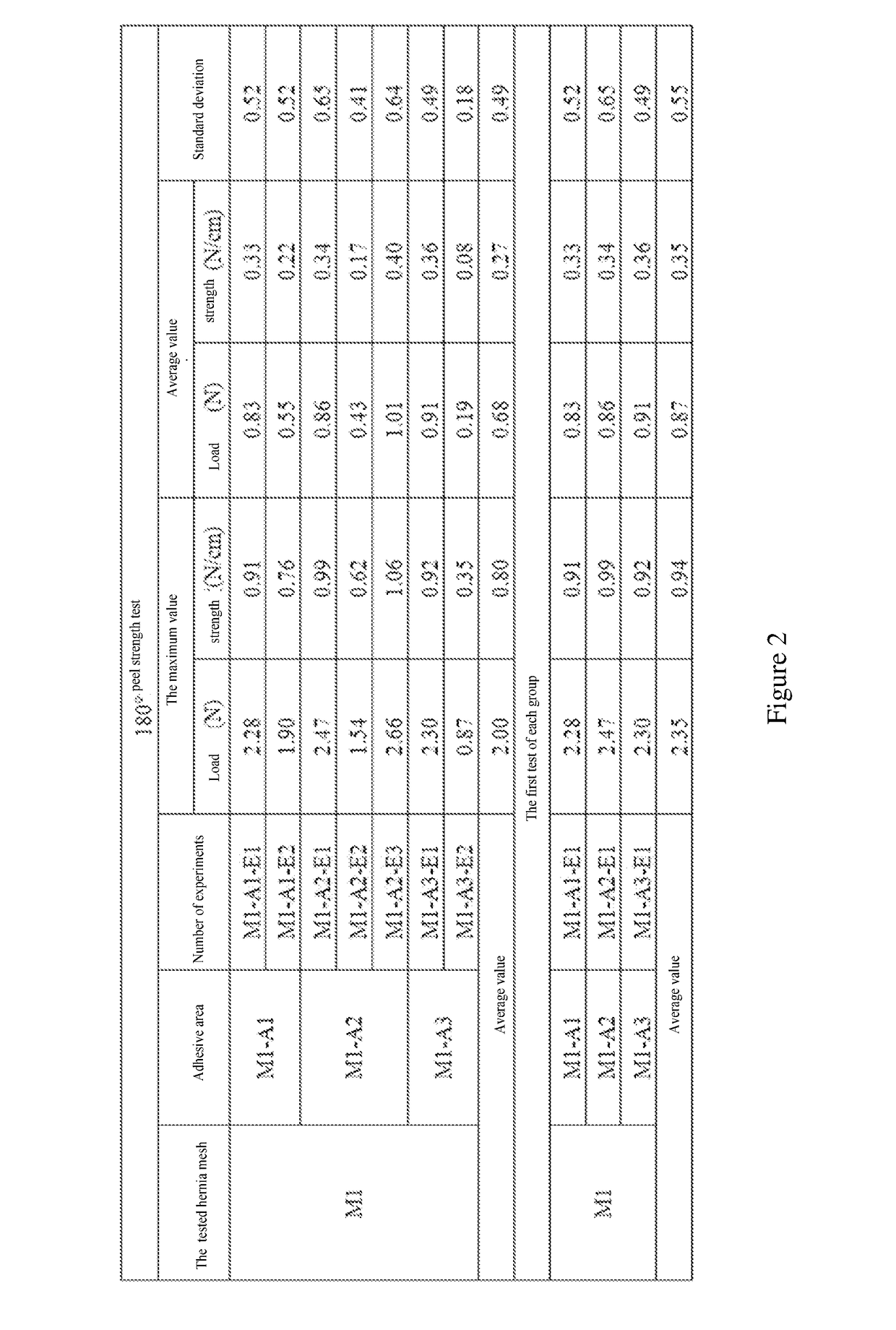Hernia mesh and its preparation method
a technology of hernia mesh and mesh, which is applied in the field of hernia mesh, can solve the problems of seroma formation, impaired abdominal wall function, and now an important social problem, and achieve the effects of facilitating patient recovery, and reducing the cost of hernia mesh preparation
- Summary
- Abstract
- Description
- Claims
- Application Information
AI Technical Summary
Benefits of technology
Problems solved by technology
Method used
Image
Examples
first embodiment
The First Embodiment
[0044]The application provides a convenient and quick method for preparing hernia mesh, which allows the doctor to customize the most suitable hernia mesh in a short time according to the needs of the patient's condition. FIG. 1 is a flow chart of the steps of the first embodiment of the present application; shown in FIG. 1, the first embodiment of the present application comprising the following steps,
[0045]S1, selecting and adding a first material particle into a filler tube attached to a 3D printer, and making an external pressure pipe connected.
[0046]In this step, in order to make the hernia mesh material has good biocompatibility, the first material is biodegradable material. Specifically, it is one or more of copolymers of polylactide and polytrimethylene carbonate, copolymers of Poly-4-hydroxybutyrate, polylactide (PLA) and copolymers of 3-hydroxybutyrate and 3-hydroxy valerate (PHBV). In the present embodiment, the first material is preferably to be a pol...
second embodiment
The Second Embodiment
[0065]In order to improve its biocompatibility and maintain its strength and stiffness in the early stages of hernia mesh, and to maintain a certain amount of support during the wound healing period and finally absorbed by the body, the second embodiment of the present application has developed a hernia mesh with a core-shell structure.
[0066]As shown in FIG. 6, the second embodiment of the present application comprising the following steps,
[0067]S1, selecting and adding a first material particle into a filler tube attached to a 3D printer, and making an external pressure pipe connected.
[0068]In this step, in the surgical wound healing period, in order to reduce the stiffness of the hernia mesh to 70% of the initial stiffness and to improve the flexibility and flexibility of the remaining hernia mesh after degradation of the shell material, therefore, the biodegradable polymer with a long degradation time (for 36 months) is selected as the core layer material. In...
third embodiment
The Third Embodiment
[0080]The third embodiment of the application also provides a hernia mesh prepared using the above method. As shown in FIG. 7, the hernia mesh provided by the third embodiment of the application includes a hernia mesh body 1 and a plurality of hook bodies 2 fixedly connected to the grid intersection of the hernia mesh body 1. The hernia mesh body 1 is used for mending the hernia site and blocking the pressure of the abdominal wall to make the hernia site bear more pressure and tensile force. A plurality of hook bodies 2 are used to fix the hernia mesh body 1 at the hernia site. The design can effectively make hernia mesh and the body connected to each other, and prevent the hernia mesh from moving or distorting in the process of human movement while avoiding the use of additional metal or plastic rivets to fix hernia mesh in the body, thus eliminating adverse reactions of the body caused by the mechanical fixation and greatly increasing the patient's comfort. To ...
PUM
| Property | Measurement | Unit |
|---|---|---|
| temperature | aaaaa | aaaaa |
| temperature | aaaaa | aaaaa |
| temperature | aaaaa | aaaaa |
Abstract
Description
Claims
Application Information
 Login to View More
Login to View More - R&D
- Intellectual Property
- Life Sciences
- Materials
- Tech Scout
- Unparalleled Data Quality
- Higher Quality Content
- 60% Fewer Hallucinations
Browse by: Latest US Patents, China's latest patents, Technical Efficacy Thesaurus, Application Domain, Technology Topic, Popular Technical Reports.
© 2025 PatSnap. All rights reserved.Legal|Privacy policy|Modern Slavery Act Transparency Statement|Sitemap|About US| Contact US: help@patsnap.com



